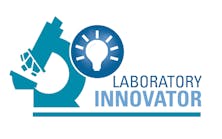Cytokines are soluble proteins that act as chemical messengers in the immune response, and play an important role for communication with cells in other systems and in cell growth, differentiation, and hematopoisis. New advances have shown that there may be wide implications for cytokines in the diagnosis and treatment of various disorders. Cytokines have been implicated in cancer, autoimmune disorders, and septic shock, among other disorders.1 Cytokine detection and quantification play an important role in clinical practice. This article will discuss the utility of cytokines and their testing in the lab.
Cytokines act in an autocrine, paracrine fashion and endocrine fashion. Cytokines such as IL-1 b, IL-6 or tumor necrosis factor alpha (TNF-a) are pro-inflammatory cytokines and biomarkers of inflammation.2 The pro-inflammatory role of TNF-a in diseases such as rheumatoid arthritis, inflammatory bowel disease, sarcoidosis, and psoriasis has been documented.3,4 In addition, it has been shown that IL-18 testing could provide prognostic value to inflammatory markers in atherosclerotic diseased patients. IL-18, in combination with IL-12, regulates the expression of a major pro-inflammatory cytokine, interferon-!, in T-cells, macrophages and even in smooth muscle cells in the atherogenesis process.5,6 Furthermore, pathogenesis and progression of heart failure has been associated with the action of proinflammatory cytokines on cardiac and extra-cardiac tissues. These findings demonstrate the pathogenic role of inflammation in heart failure and particularly the role of inflammatory cytokines in this process.7
Cytokine-related therapies offer promise for the treatment of various disorders. Inhibitors of cytokine actions have utility in the use of the anti-IL-2 receptor for reducing graft rejection in transplant patients, in the use of hematopoietic growth factors to reverse acute events that arise from chemotherapy or radiation therapy of certain cancer types or in the treatment of certain immunodeficiency disorders. Anti-cytokine therapies also have shown promising results in animal models in the development of antagonists that can be administered safely to humans for the treatment of allergies and asthma.1
Since cytokines are implicated in a host of disease processes and applications of cytokine-based therapies in human clinical trials are ongoing, it is only a matter of time before the measurement of cytokines in the clinical laboratory becomes routine.
Measurement of cytokines
Various techniques for cytokine measurement exist. Four types of tests are discussed below. Advantages and disadvantages are given for each test (See Table 1).
Bioassays: Many cytokines are measured by bioassays or immunoassays. Historically, bioassays of cytokines have been used to measure bioactivity in a particular biological model or cell line. Tests for chemotactic activity, proliferation, or cytotoxicity are among these bioassays. Good sensitivity and the capability of measuring biologically active molecules have been the advantages of bioassays, while lack of specificity, long turnaround time, and poor precision are among their disadvantages.2
Immunoassays: Immunoassays currently are the method of choice for determination of cytokines. Enzyme-linked immunosorbent assay (ELISA) is the commonly used form of immunoassay. ELISA uses a primary antibody for the capture and a secondary antibody conjugated to an enzyme or radioisotope for the detection. Most ELISA kits, however, detect only one cytokine at a given time.2 The introduction of multiplexed systems has overcome this problem. Among the novel technologies of immunoassays for cytokine determination is the multiplex analysis system that allows the simultaneous detection of 100 or more different biomolecules performed in a single microplate well. These cytokine antibody arrays can detect simultaneously multiple cytokine expressions in one assay at the protein levels in any body fluid, such as plasma, serum, cell lysates, cerebrospinal fluid, ascites, saliva or urine.
These arrays have high sensitivity and can detect cytokine at the pg/ml concentrations.8 Bozza et al, using multiplex cytokine technique, showed that various cytokines were upregulated with severe clinical manifestations when compared with mild disease forms.9 Cytokines, as modulators or effectors of inflammatory response, play an important role in the development of sepsis and multi-organ dysfunction. Cytokines such as IL-6 and IL-8 have clinical utility in the prediction of outcomes in severe sepsis. Cytokine profiles, using multiplexed assays, have been used to determine various cytokines for the assessment of severity of diseases such as sepsis.10 The cytokine monocyte chemoattractant protein (MCP-1) is a regulatory mediator in sepsis. Vermont and coworkers have shown that blood concentration of the MCP-1 correlates well with disease severity in meningococcal sepsis and as a predictor of mortality.11
|
TESTS
|
ADVANTAGES
|
DISADVANTAGES
|
|
1. Bioassays
|
good sensitivity; capability of measuring biologically active molecules |
low specificity; poor precision; longer assay times |
|
2. Immunoassays
|
excellent sensitivity; high specificity; shorter assay times; ability for automation |
measures total cytokine concentration; cross-reactivity with precursor or degradation products |
|
3. Flow Cytometry
|
rapid analysis
|
complexity of testing
|
|
4. Nanoparticle-modified aptamers
|
high sensitivity; high specificity; ability for automation |
technical limitation; not widely available |
Table 1. Comparison of advantage and disadvantages of various methods used for the analysis of cytokines
Multiplexed cytokine sandwich immunoassays are capable of measuring dozens of cytokines at the same time. The main advantages of immunoassays are their ability to be automated and their excellent sensitivity of analytical performance. On the other hand, as with bioassays, there are some disadvantages. For example, immunoassays often measure total cytokine concentration, which consists of both nonfunctional and functional molecules. Nonetheless, immunoassays have several advantages over traditional bioassays, such as higher specificity and precision, shorter assay times (only a few hours versus a few days for bioassays), and simpler calibration.2
Flow cytometry: Various techniques such as flow cytometry, high performance liquid electrophoresis, or the aforementioned multiplexing techniques have been employed to detect cytokines and their receptors. Flow cytometry is used for intracellular cytokine detection, which can be performed in less than two hours. Flow cytometry can use blood or other body fluids such as cerebrospinal fluid or synovial fluid as the specimen of choice for cytokine analysis. Use of flow cytometry has the advantage of rapid analysis for cellular identification. The drawbacks of using flow cytometry, however, lie in the complexity of identifying and quantifying intracellular cytokines and related molecules, background induced autofluorescense that is seen in some body fluids, the automatic gating of cells, and the requirement for negative control for cutoff levels.2
Nanoparticle-modified aptamers: Another method which may find its way into diagnostics and therapeutics in the future is the use of nanoparticle-modified aptamers. Short synthetic nucleotide sequences of DNA or RNA, known as aptamers, can be used to mimic properties of antibodies. Ultrasensitive densitometric methods for cytokine-detection that use gold nanoparticle-modified aptamers have been developed. In such assays, aptamer pairs bind to the target protein to form a sandwich complex fixed onto a micro-plate. After amplification of a signal of gold nanoparticles by silver-enhancement technology, and following several steps, a micro-plate reader measures the absorbance. So far a number of aptamers with good specificity and good affinity have been characterized for a host of cytokines such as vascular endothelial growth factor.12,13
Emerging techniques such as molecular imaging with radiolabelled anti-TNF-a antibodies are being tested for diagnostic and for therapeutic use.3 Regardless of the type of the technology chosen for cytokine testing, analysis of cytokines needs to be performed no more than five hours after sample collection to avoid cellular interaction. Except for few cytokines such as IL-6, the basal concentration of circulating cytokines is very low and usually in range of only a few pg/mL. Various factors such as short half-lives, intra-individual variations, the presence of autoantibodies or soluble cytokines receptors/cytokine receptor antagonists or nonspecific inhibitors all can contribute to inaccurate cytokine measurements and inaccurate results.2
Conclusion
Cytokines play important roles in growth modulation, angiogenesis, cytotoxicity, inflammation, and immune modulation in various disorders. There are a number of different tests and instrumental techniques available for cytokine analysis, with varying degrees of advantages and disadvantages. Emerging techniques hold a great potential for diagnosing and imaging patients with chronic inflammatory diseases. A strong link between chronic inflammation and tumor progression in certain types of cancers has been established. Cancer-related inflammation is the result of expression of various factors, including the expression of inflammatory cytokines.14 In addition, in some individuals with certain cancer types, significantly higher levels of certain cytokines have been found than are found in healthy individuals.15 Laboratory measurements of relevant cytokines could therefore prove useful for the improved diagnosis in certain kinds of cancer. As research on cytokine testing continues, cytokine profiles that are associated with distinct clinical outcomes could prove to be useful in the design of future biomarkers for disease diagnostics and prognostics and eventual routine testing in the clinical laboratory.
Masih Shokrani, PhD, MT(ASCP), is an assistant professor in the Clinical Laboratory Science Program at Northern Illinois University.
References
- Coico R, Sunshine G. Immunology; A short course. (6th edition). Wiley-Blackwell, Hoboken, NJ: John Wiley & Sons, Inc., 2009.
- Burtis CA, Ashwood ER, Bruns DE. TIETZ textbook of clinical chemistry and molecular diagnostics (4th edition). Elsevier Saunders, St. Louis, MO, 2006.
- Glaudemans AW, Dierckx RA, Kallenberg CG, Fuentes KL. The role of radiolabelled anti- TNFa monoclonal antibodies for diagnostic purposes and therapy evaluation. J Nucl Med Mol Imagin. 2010;54(6):639-53.
- Sanchez-Munoz F, Dominguez-Lopez A, Yamamoto-Furusho JK. Role of cytokines in inflammatory bowel disease. World J Gastroenterol. 2008;14(27):4280-8.
- Packard RR, Libby P. Inflammation in atherosclerosis: from vascular biology to biomarker discovery and risk prediction. Clin Chem. 2008;54(1):24-38.
- Ranjbaran H, Sokol SI, Gallo A, Eid RE, Lakimov AO, D'Alessio A, Kapoor JR, Akhtar S, Howes CJ, Aslan M, Pfau S, Pober JS, Tellides G. An inflammatory pathway of IFN-gamma production in coronary atherosclerosis. J Immunol. 2007;178(1): 592-604.
- Oikonomou E, Tousoulis D, Siasos G, Zaromitidou M, Papavassiliou AG, Stefanadis C. The role of inflammation in heart failure: new therapeutic approaches. Hellenic J Cardiol. 2011;52(1):30-40.
- Cytokines antibody Arrays by Affymetrix. http://www.panomics.com/index.php?id=product_39. Accessed Nov. 16, 2011.
- Bozza FA, Cruz OG, Zagne SM, Azeredo EL, Nogueira RM, Assis EF, Bozza PT, Kubelka CF. Multiplex cytokine profile from dengue patients: MIP-1beta and IFN-gamma as predictive factors for severity. BMC Infect Dis. 2008; 5;8:86.
- Bozza FA, Salluh JI, Japiassu AM, Soares M, Assis EF, Gomes RN, Bozza MT, Castro-Faria-Neto HC, Bozza PT. Cytokine profiles as markers of disease severity in sepsis: a multiplex analysis. Crit Care. 2007;11(2):R49.
- Vermont CL, Hazelzet JA, de Kleijn ED, van den Dobbelsteen GP, de Groot R. CC and CXC chemokine levels in children with meningococcal sepsis accurately predict mortality and disease severity.Crit Care. 2006;10(1):R33.
- Li YY, Zhang C, Li BS, Zhao LF, Li XB, Yang WJ, Xu SQ. Ultrasensitive densitometry detection of cytokines with nanoparticle-modified aptamers. Clin Chem. 2007; 53(6):1061-6.
- Ng EW, Shima DT, Calias P, Cunningham ET Jr, Guyer DR, Adamis AP. Pegaptanib, a targeted anti-VEGF aptamer for ocular vascular disease. Nat Rev Drug Discov. 2006;5:123-32.
- Erreni M, Mantovani A, Allavena P. Tumor-associated Macrophages (TAM) and Inflammation in Colorectal Cancer.
- Gonz'alez-Santiago AE, Mendoza-Topete LA, S'anchez-Llamas F, Troyo-Sanrom'an R, Gurrola-D'iaz CM. TGF-ss1 serum concentration as a complementary diagnostic biomarker of lung cancer: establishment of a cut-point value. J Clin Lab Anal. 2011; 25(4):238-43.




